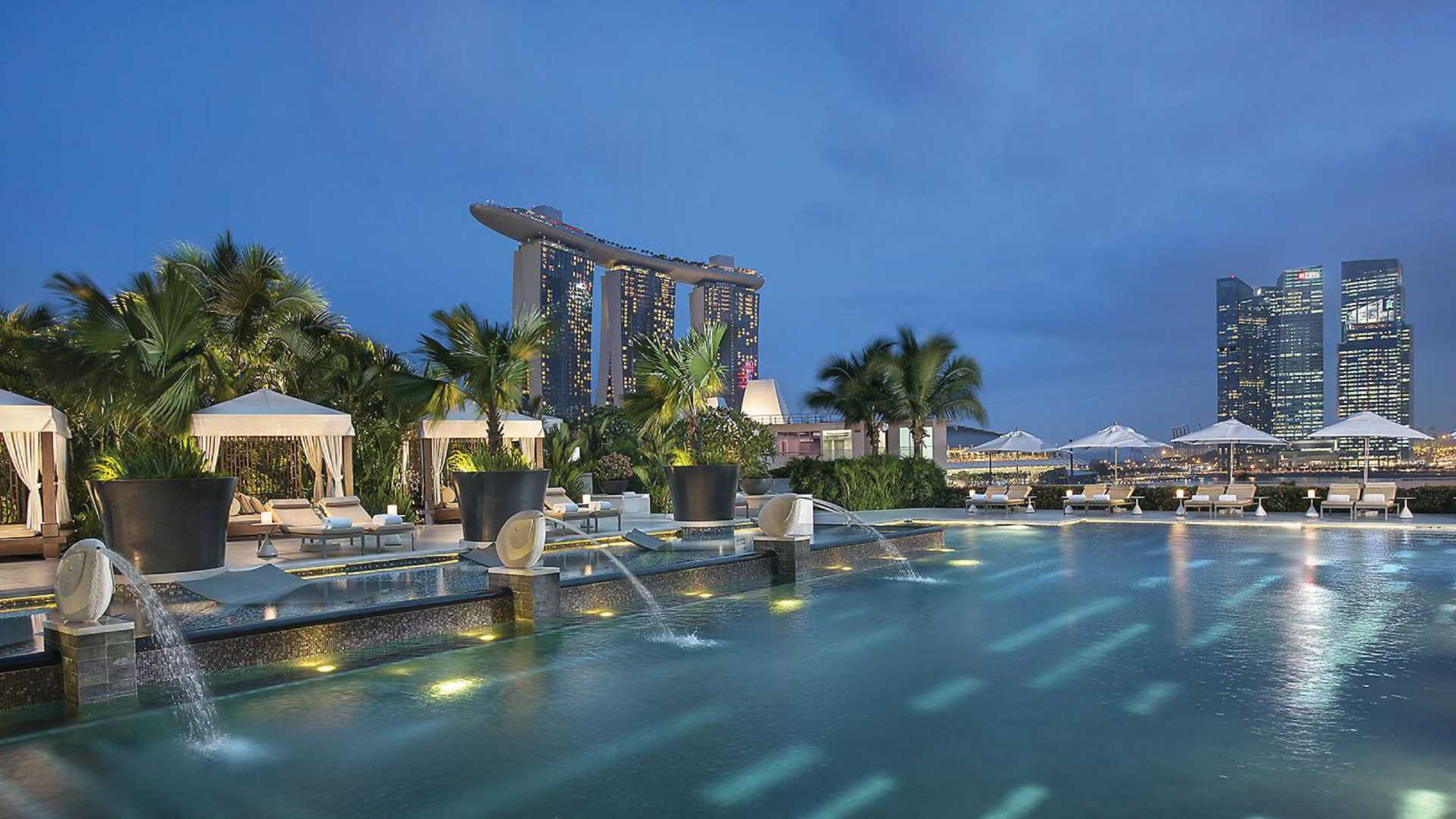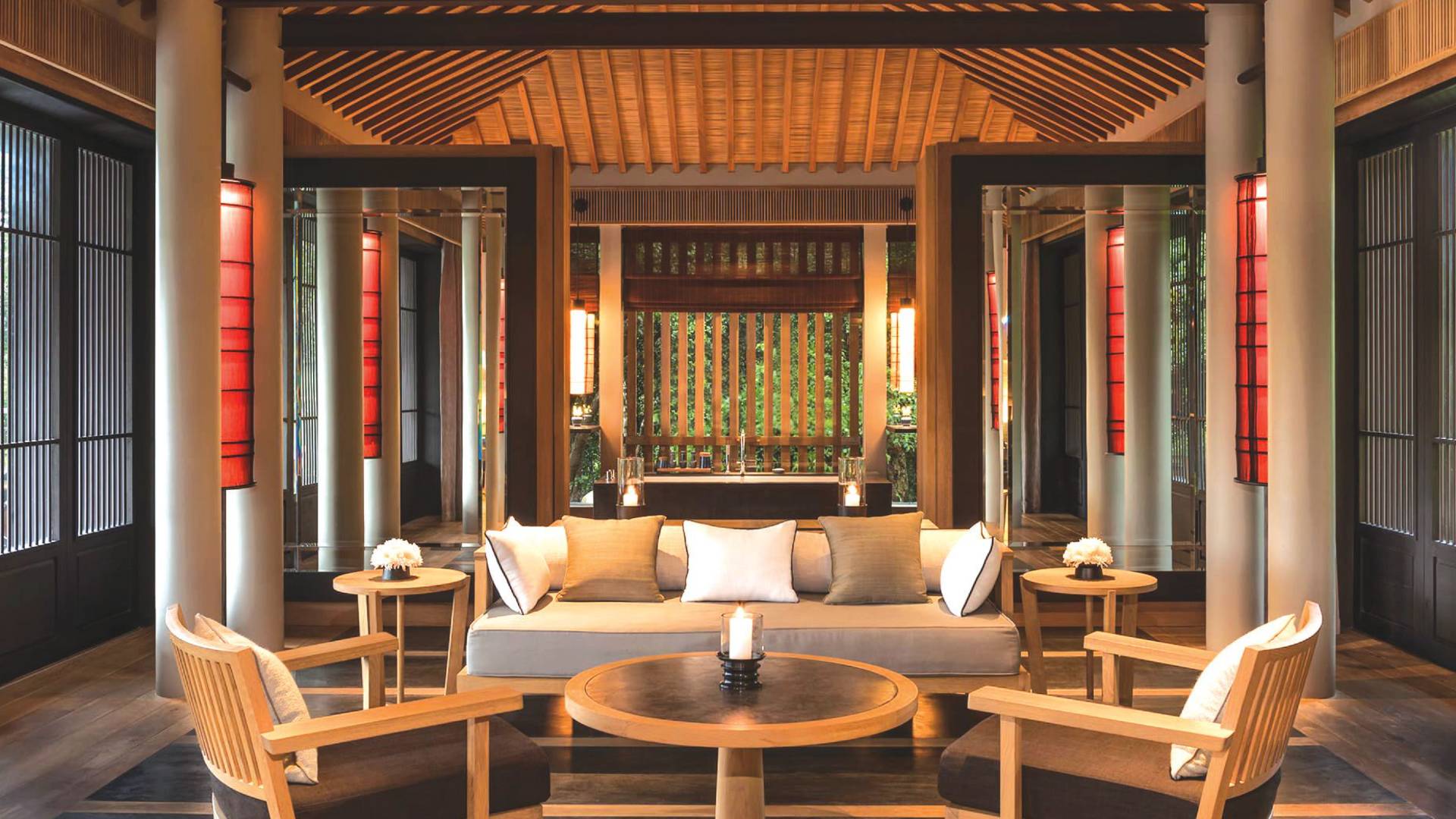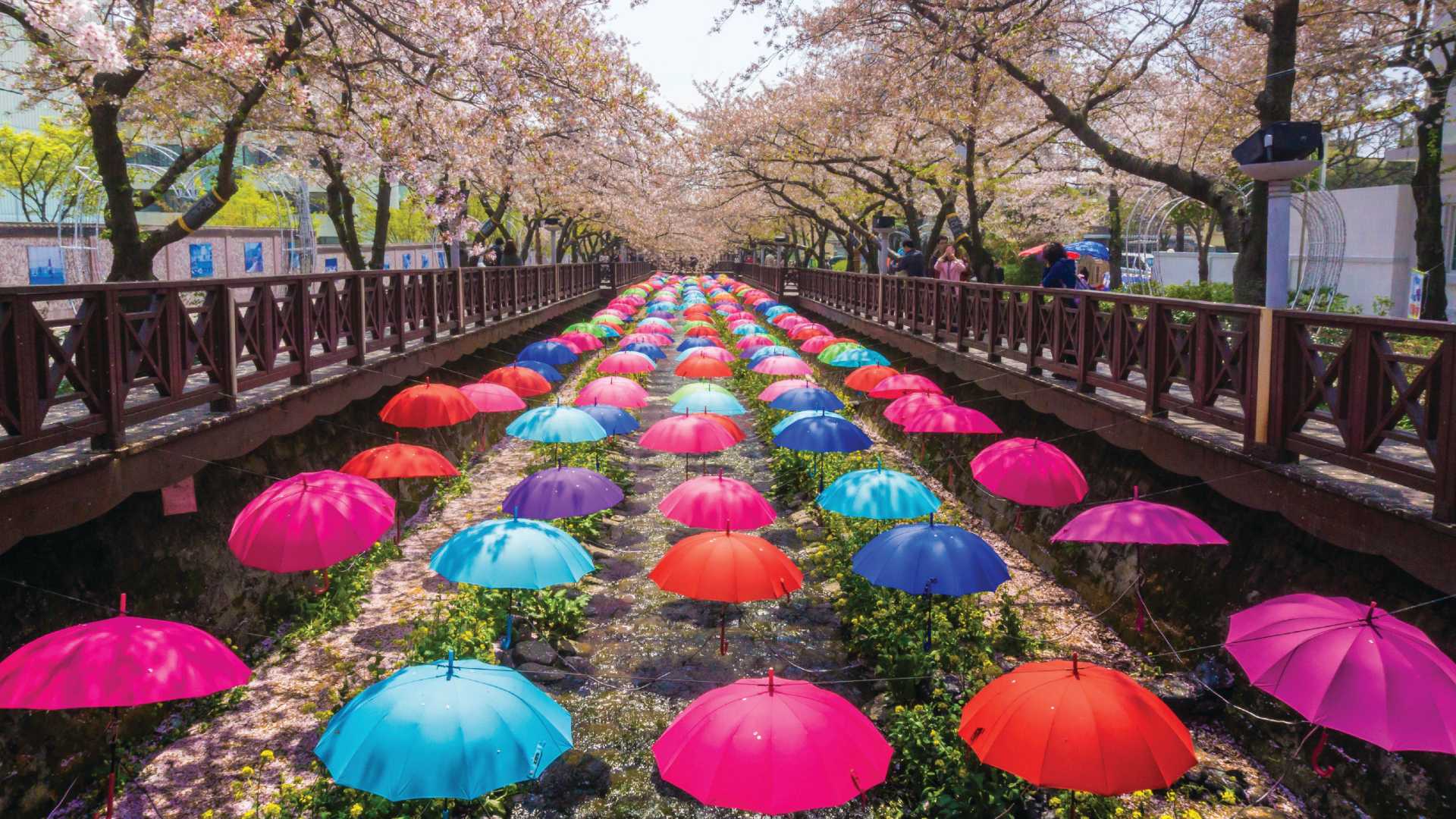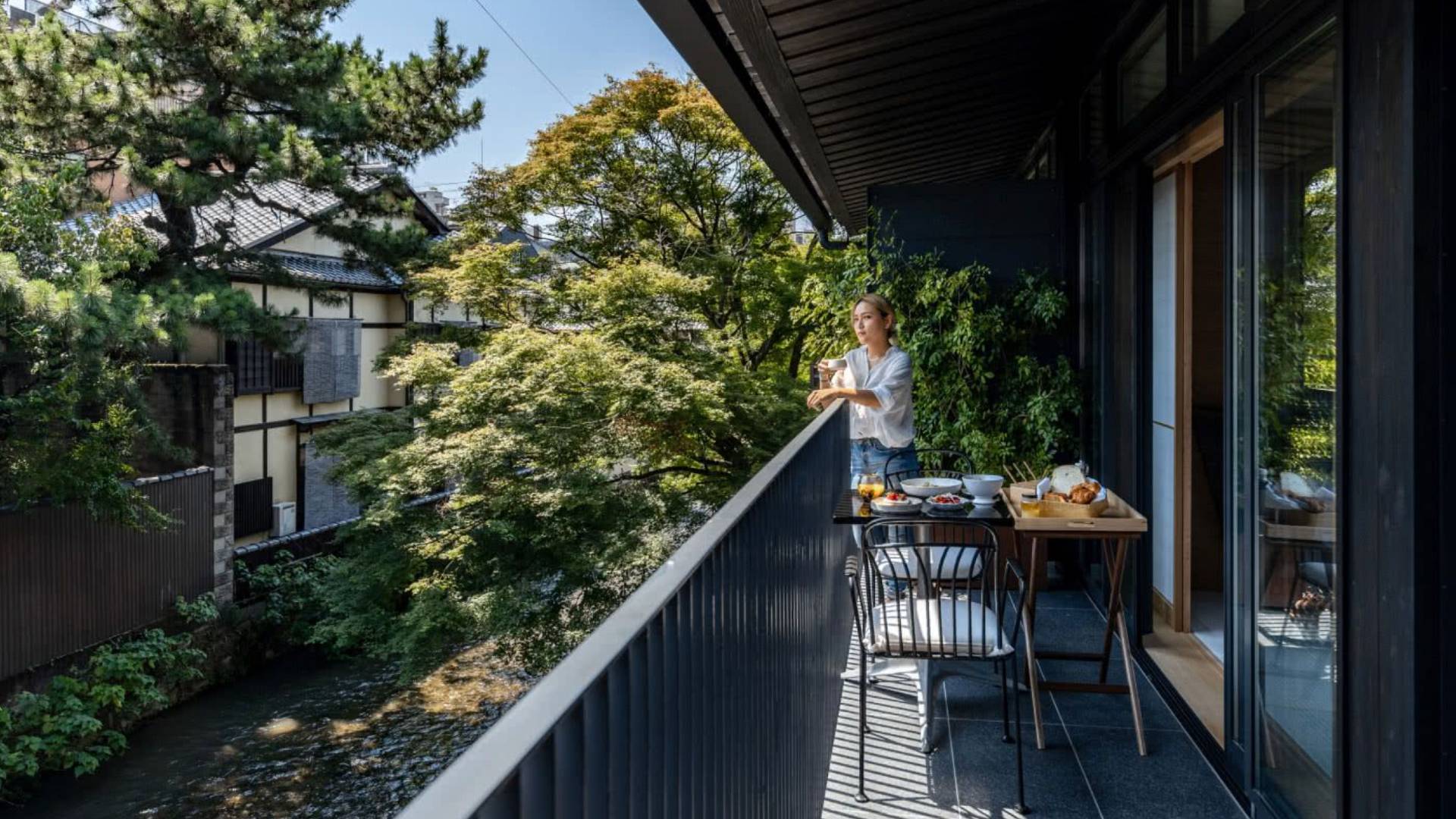From the sandy islands of Thailand to the neon playground of Seoul, Asia is ready to welcome visitors again, writes Michael Turtle.
Just as the countries themselves are opening up, so are new hotels and resorts, with dazzling designs and opulent facilities welcoming the first guests. Rich tradition and deep spirituality are fused with modern luxuries and innovative cuisine to offer some of the most rewarding (and indulgent) travel experiences in the world. Whether you’re looking for something new or a comfortable favourite, you’ll find it in Asia this year.

The Lion City is ready to roar again and Singapore’s hoteliers have been busy during the lockdown preparing some incredible new and renovated properties. The Mandarin Orchard has just reopened as the Hilton Orchard Singapore, now the largest hotel in the city with 1,080 refurbished rooms and suites. Set among historic shophouses, The Clan Hotel embraces the heritage of its location with an in-house tea master and antique displays within the 30-storey modern building. And the lavish properties continue on Sentosa with a refresh of the Capella embracing its island setting with beach access and private plunge pools.
For a culture hit, the Singapore Art Museum has opened a new art destination at Tanjong Pagar Distripark, with the expansive space able to host large-scale installations and other experimental exhibitions. A recently developed heritage trail around Sentosa leads you to 30 historic sites with information signs detailing the island’s transition from military complex to leisure district. And for families, the Jurassic Mile is a new outdoor display with more than 20 life-sized dinosaur models along a one-kilometre path (roaaarrr!).
The shopping scene is Singapore has bounced back stronger than ever and the focus is still on Orchard Road, from the city’s oldest department store, Tangs, to glitzy malls like the Mandarin Gallery. Along with window shopping (and actual shopping), there are specialist experiences like a tour and tasting of the Grande Whisky Collection at ION Orchard. Over at the Shoppes at Marina Bay Sands, don’t waste your energy walking between the luxury showrooms – hop on a flat-bottomed wooden boat, known as a sampan, and cruise past the boutiques.
Of course, you can’t come to Singapore and not try the food, from frenzied hawker markets to fine dining (and a few places that claim to be both). A food tour is a good way to find the best local bites, and the Luxury Gourmet Experience by Wok ‘n’ Stroll is the only tour that takes you to several Michelin-starred restaurants and gives you access behind the scenes.

The biggest addition to Bangkok’s luxury hotel scene is the return of the Four Seasons, now an enormous complex along the mighty Chao Phraya River that’s deservedly described as an urban resort (see page ???). Shaking things up in the Silom neighbourhood is just-opened The Standard, a funky design property that’s now the group’s flagship hotel in Asia, sporting the city’s highest outdoor rooftop bar. It joins The Standard Hua Hin, which opened last year at the beachside location three hours’ drive from Bangkok.
On the islands, Koh Samui is the location for the first Kimpton resort in Southeast Asia, which just opened on a quiet beach surrounded by a laidback village atmosphere. Over on the west coast, the new Banyan Tree Veya Phuket is calling all stressed-out global citizens to its wellness centre, which has been developed in response to the pandemic and leads guests through a personalised program including mindfulness sessions, yoga and rehabilitative floatation.
Wellness retreats are booming in Thailand, with Kamalaya on Koh Samui offering a private beach, detox menus and even a monk’s cave for meditation. Look also to new ones outside the obvious tourist destinations, in emerging parts of the country like the Khao Sok rainforest, Koh Lanta island and the villages of Khao Lak, as well as many in the northern jungles of Chiang Mai.
While much of Thailand’s tourism has been focused on Bangkok and the southern beach resorts, Chiang Mai has been quietly increasing its high-end offerings, and the latest is the new Meliá, with a stunning rooftop bar and a central location offering easy access to the markets and temples the city is renowned for. It’s also a perfect base to explore the region’s national parks and waterfalls, visit the hill tribes or join a local cultural workshop on gold leaf painting or traditional weaving.

Vietnam’s long coastline is now bookended by two natural escapes – the island of Phu Quoc in the south, and the 1600 islands of Ha Long Bay in the north. The best way to see Ha Long Bay’s dramatic karst limestone formations is on an overnight cruise and Paradise Vietnam has some of the best boats in the World Heritage Site. Paradise Peak, for instance, has just eight rooms – all suites – plus a library and fitness centre on board.
In Phu Quoc, the resorts are set between the sand and the jungle and the newest is the Regent, all pool suites and villas full of natural light, with six restaurants and bars on site. There’s no need to leave the property but, if you do, there are kilometres of pristine beaches and some lively markets to explore nearby.
Vietnam’s biggest urban centre, Ho Chi Minh City, can seem overwhelming with its hectic torrent of motorbikes filling the streets all day and night, so why not escape far up from the traffic to some of the city’s trendiest rooftop bars. Social Club Saigon, on the top two floors of the Hôtel des Arts is the best in town, with an impressive collection of gin, while Glow Rooftop Lounge and Chill SkyBar have panoramic views to match their extensive cocktail menus.
If you prefer an escape to serenity, there’s always the Amanoi on the dramatic coastline of Vinh Hy Bay. It was Vietnam’s first six-star resort when it opened less than ten years ago and embraces its verdant setting on the edge of a national park with timber sundecks, large sliding doors, and latticed windows.
Or prepare for the ultimate Vietnam adventure – intoto the world’s largest cave. Known as Son Doong, it’s ten kilometres long and is so big ‘you can fly a Boeing 747 through it’ as people like to say. To preserve the site, there’s a limit of just 1000 visitors a year, which is why an expedition into the cavern complex costs about $4000 per person.

With Qantas starting direct flights from Sydney to Seoul in December, South Korea is becoming even more accessible for Australians. An already burgeoning destination, interest in the country has only increased with cultural phenomena like BTS and Squid Game (although it’s not clear why a gory television show is encouraging tourism).
Still, capitalising on the expected increase in visitors post-pandemic, a new Luxury Collection Hotel, Josun Palace, has opened in Seoul’s trendy Gangnam district, complete with an art collection for decoration and perfumed with the hotel’s signature scent. Exploring around Gangnam, you’ll find hip cafes and boutique shops on the tree-lined streets of Garosu-gil, while further away the shopping street of Myeong-dong has some of the best high-end designer products.
For South Koreans, spas are more than just pampering, they are an important part of the culture, and across the country you’ll find some decadent facilities. In Seoul, Shangpree Spa is said to have the best facials in the city and provides tea, snacks, and private dressing rooms. Or you can try one of the traditional Korean spas known as jimjilbangs, with saunas, herb-infused baths, ice rooms and a range of treatment options.
From Seoul, it’s just over two hours to Busan on the high-speed train, an easy and comfortable way to get to the country’s second largest city (especially with the larger first-class seats). During the pandemic, the Hilton Busan was rebranded to the Ananti Hilton Busan to better reflect its connection to the local town of Ananti on a secluded stretch of coastline. With epic views of the water, it has the largest infinity pool in South Korea – a good enough reason to visit!

Tokyo, a city that never sleeps, is nonetheless waking up from a nap as it prepares to open its borders to the world. More than 80 new hotels opened in 2020 in preparation for the (delayed) Olympics and most have seen very few international guests. The Four Seasons at Otemachi has jaw-dropping views from the top floors of the new 39-storey skyscraper; the Kimpton in Shinjuku oozes New York cool; and the Yuen Bettei Daita brings traditional Japanese aesthetics to the futuristic capital. Later in the year, two more magnificent properties are due to open – the Bulgari Hotel above Tokyo Station and Tokyo EDITION Ginza, with its ethos of intimate sophistication.
There’s more to see in Tokyo than can fit into just one visit – or even one lifetime – but one ought to make time for trying one of the city’s Michelin-starred restaurants. Luckily, there are 203 to choose from (the most of any city in the world), and for the best sushi, two-starred Nihonbashi Kakigaracho Sugita’s tasting menu includes specialties like sliced abalone, monkfish liver and simmered octopus. For a three-star extravaganza, Kanda takes traditional Japanese dishes and adds French touches like caviar and truffles.
For a traditional side of Japan, the former capital of Kyoto boasts a stunning collection of World Heritage-listed temples and shrines that transport visitors back to the days of shoguns and samurais. It also has some wonderful new hotels, with The Shinmonzen putting a modern spin on a traditional ryokan inn; the contemporary Roku Kyoto paying homage to the temples with its wooden columns and minimalistic design; and the ten-room Arashiyama Mansion Mama offering indulgence with its stone baths overlooking private gardens.
However, the ultimate in traditional Japanese luxury still comes in the ryokans and onsen of the remote mountains and less populated provinces of Kyushu and Shikoku. If ever there’s been a time to look for some simplistic decadence away from the crowds, this is it.
One very lucky cruiser, along with their chosen travel companion, will experience the wonders of the Arctic Passage between Norway and Iceland aboard a 15 night Oceania Cruise in August 2023.
Your email address will not be published.
…
Vaccinated guests sailing Norwegian Cruise Line, Oceania Cruises and Regent Seven Seas ships will no longer be subject to any pre-departure COVID testing requirements for departures after September 3, 2022.
Comparable to the best restaurants on land, fine dining is a highlight of any cruise, and these gourmet venues sure deliver.
…
…  …
…  …
…  …
…  …
…  …
…
Cruise Passenger magazine was first published in 1996, as a twice yearly independent magazine giving a voice to the cruise passenger.
Since then, our passion for cruising, ships, destinations and itineraries has grown with the booming industry, and our magazine is now published four times a year. Our digital publication, cruisepassenger.com.au is becoming increasingly popular, with more than 100,000 readers a month and 35,000 Facebook followers.